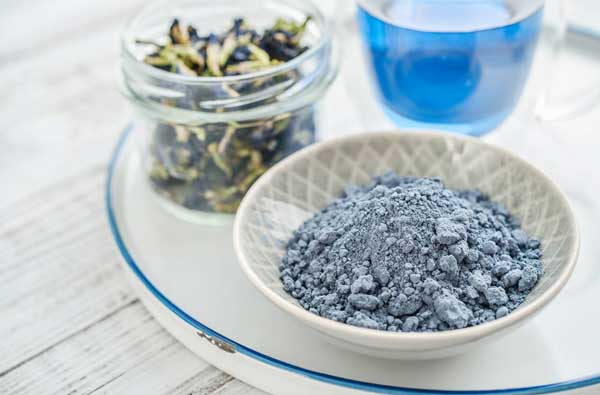
Monday – Friday: 10am – 7pm
Saturday: 10am – 6pm
Sunday: 1pm – 6pm

The strikingly beautiful vine known as Asian pigeonwings or butterfly pea grows in Thailand and other countries in Southeast Asia. Its bright blue flowers have long contributed vivid color to Asian cuisines.
Also called blue matcha, the powder made from butterfly pea flowers (Clitoria ternatea) is not related to the matcha made from green tea leaves (Camellia sinensis). The two plants have little in common.
Butterfly pea powder has been touted for helping with stress, depression, blood-sugar control, weight loss, and hair and skin health.
One small study “showed that drinking a beverage containing butterfly pea flower extract increased antioxidant levels and reduced blood sugar and insulin levels, despite the sugar levels in the drink,” according to Rachael Link, MS, RD.
Other research suggests that it might slow the formation of fat cells and relieve inflammation. It’s generally considered safe in moderation.
Ask a hip bartender about the oohs and ahhs that ensue when a beverage contains butterfly pea powder. Add a squeeze of fresh lemon, and voilà! The blue drink turns magenta.
Butterfly pea powder can also be added to a smoothie containing bananas, hempseed, and almond milk for a fun treat.
“Blue matcha is taking over Instagram—but there’s a catch” by Bella Gerard, www.Health.com, 1/5/18
“Extraction methods of butterfly pea (Clitora terratea) flower and biological activities of its phytochemicals” by E.J. Jeyaraj et al., Journal of Food Science and Technology, 9/1/21